7 Things That Could Only Happen to You in Greek Mythology
Thinking your luck couldn’t get any worse? Well, brace yourself for a humorous journey into the world of Greek mythology, where even the mighty...
Ania Kaczynska 3 October 2023
Royal portraiture is a centuries-old tradition, but it might be called the forerunner of the posed selfie – an artfully curated image that is meant to promote and aggrandize the subject.
Painted portraits have historically been the privilege of the great and the good (and perhaps the not-so-good!). In Western art, scholars believe portraiture begins with the ancient Egyptians’ stylized profile portraits, continuing through the Greeks to the Romans. Around the 1500s the sitter starts to turn towards us, the viewer. Now we see more of their body, their clothes, and their surroundings. Objects with symbolic meaning are often included. And perhaps most importantly for a modern audience, their eyes finally meet ours.
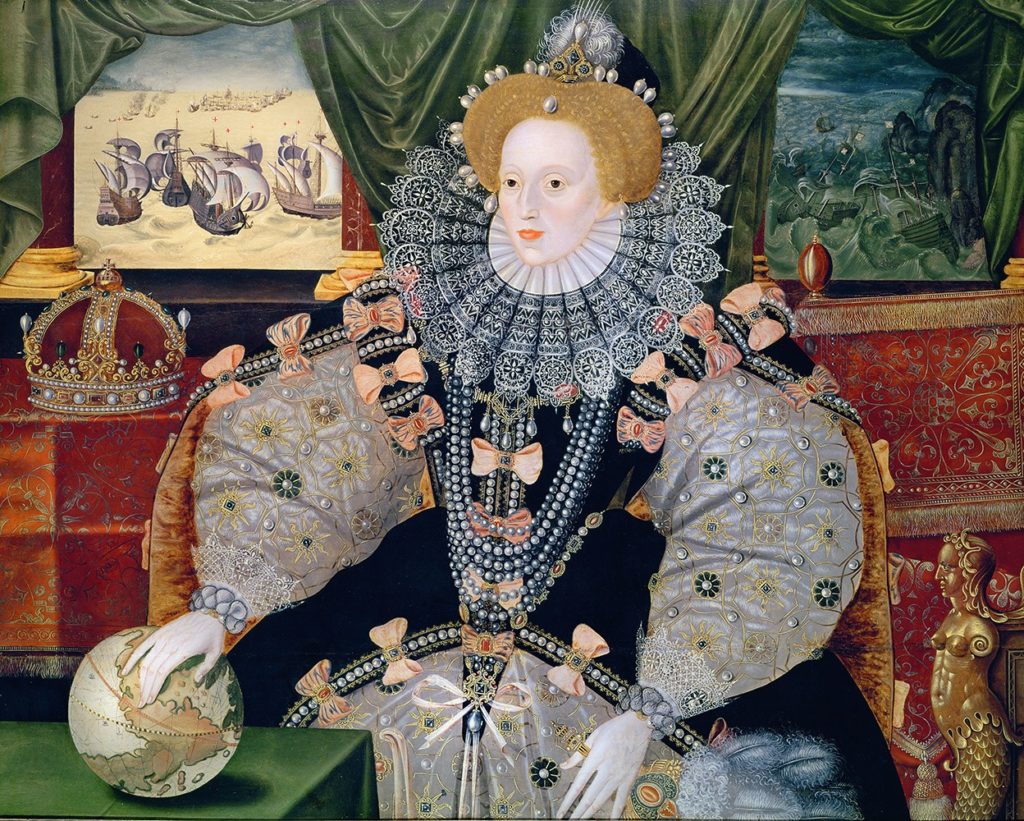
We also begin to see more of their homes, their land and their wealth. These props evidently give us all kinds of clues and narratives about the lives of the Royals. The security of the dynastic line is emphasized as we begin to see the royal family pictured – husbands, wives, and children. Look at this beautifully arranged portrait of the young Queen Victoria, her beloved Albert, and their five children.
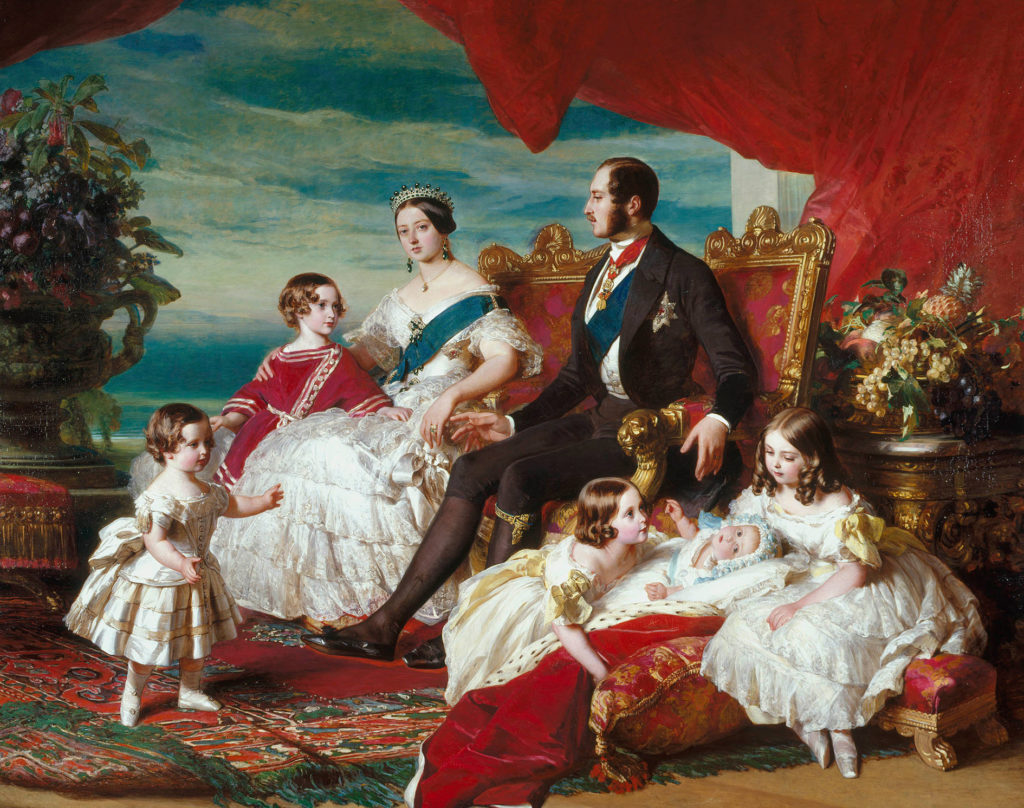











Portraits would be found decorating the walls of palaces, civic buildings and the homes of the aristocracy and gentry. The earliest known British Royal portrait painted from life is of King Henry VII from 1505.

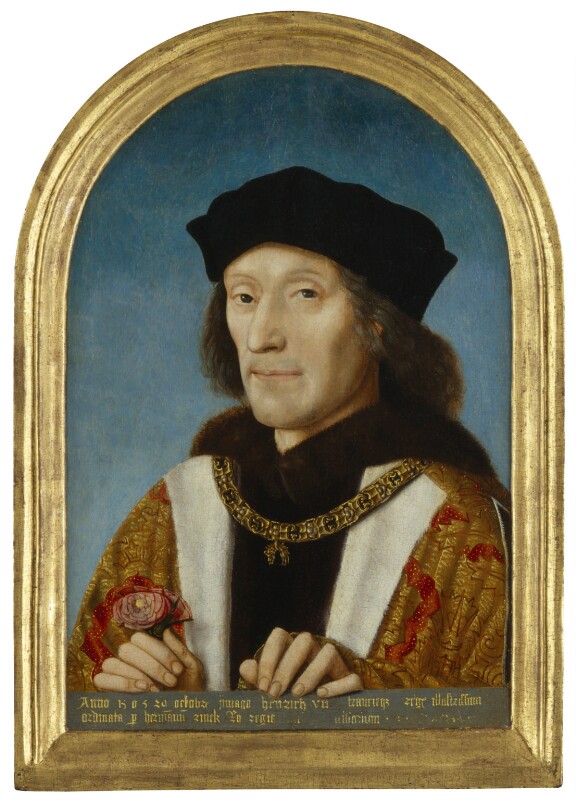










Surprisingly, in early portraits, the concept of authentic likeness was less important than today. Stylized images were the norm, and presented what the royal ‘wanted’ us to see. For example, look at this magnificent portrait of Henry VIII by Hans Holbein, proud and tall with a codpiece indicating his royal virility. This painting was copied and distributed amongst Royal friends and ambassadors across the kingdom.
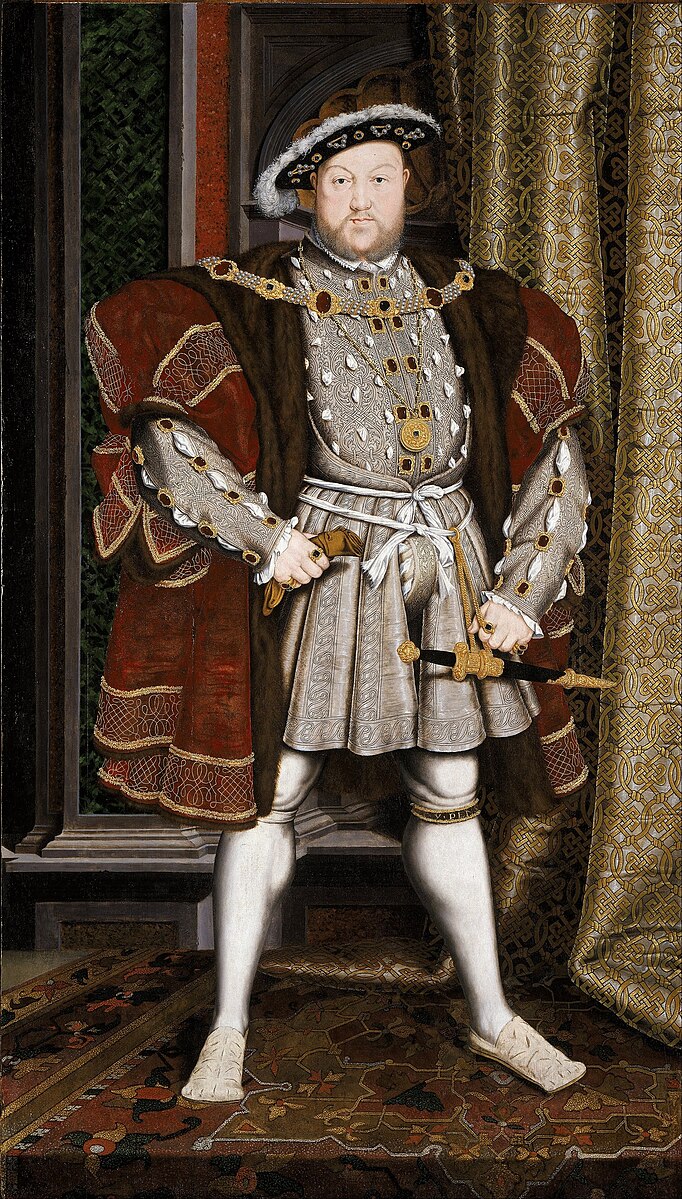
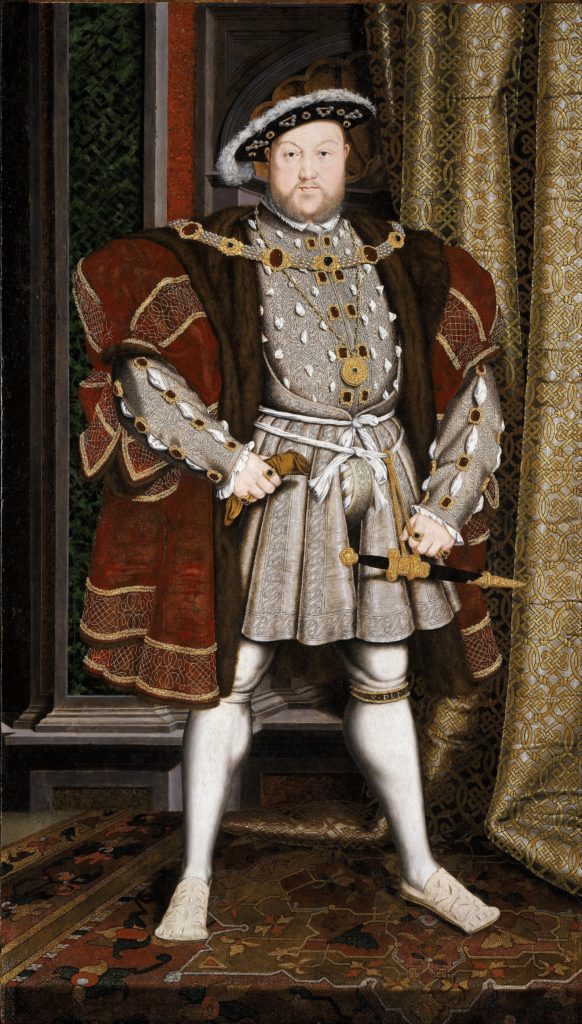










The advent of photography brought new ways to record and celebrate our Royals, but also to capture them unawares. Promoting and preserving the Royal image is obviously a difficult task in the digital age. Choreographed photographs are heavily publicized to promote the Windsor family line as having authority and longevity whilst placing them firmly in the modern age.
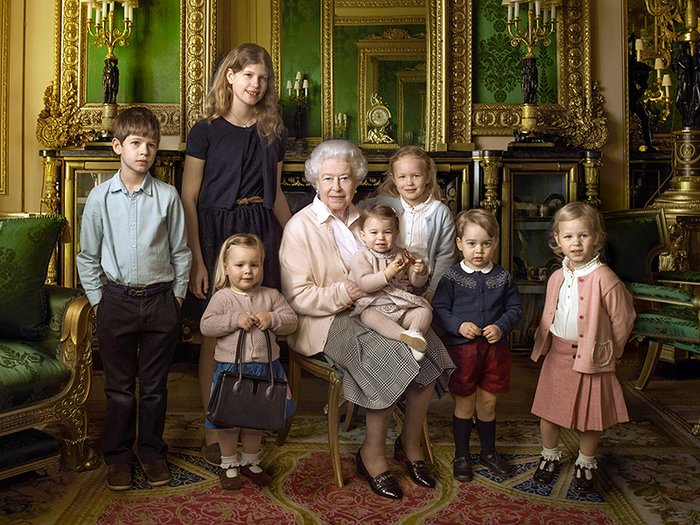











In this official photograph, the oldest and newest generations of royals smile together for the camera. It seems like the kind of snap that could be captured at any family gathering – Grandma with the youngest babe on her lap, older grandchildren standing rather awkwardly and self-consciously, moreover the comedic little Miss bossy boots hauling up Grandma’s oversized handbag. It’s cute, and it’s real. But gaze into the background and you will see that this is nevertheless no ordinary family snap.
This is an opulent palace massed with gold, brocade and priceless treasures. The mirror artfully recreates this wealth into infinity behind them. Critics might say that this is one of the richest and most pampered dynastic families in the world, who luxuriate in their royal plunder while many of the ordinary children of Britain fail to thrive in conditions of poverty and neglect.
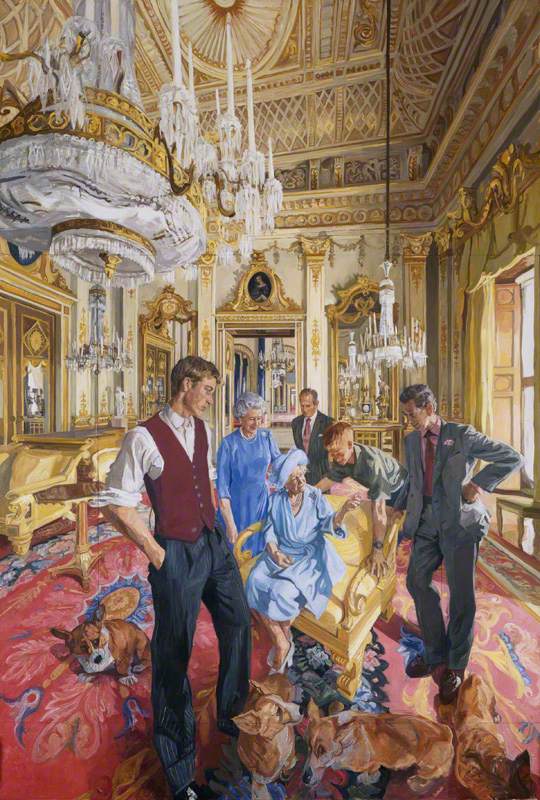
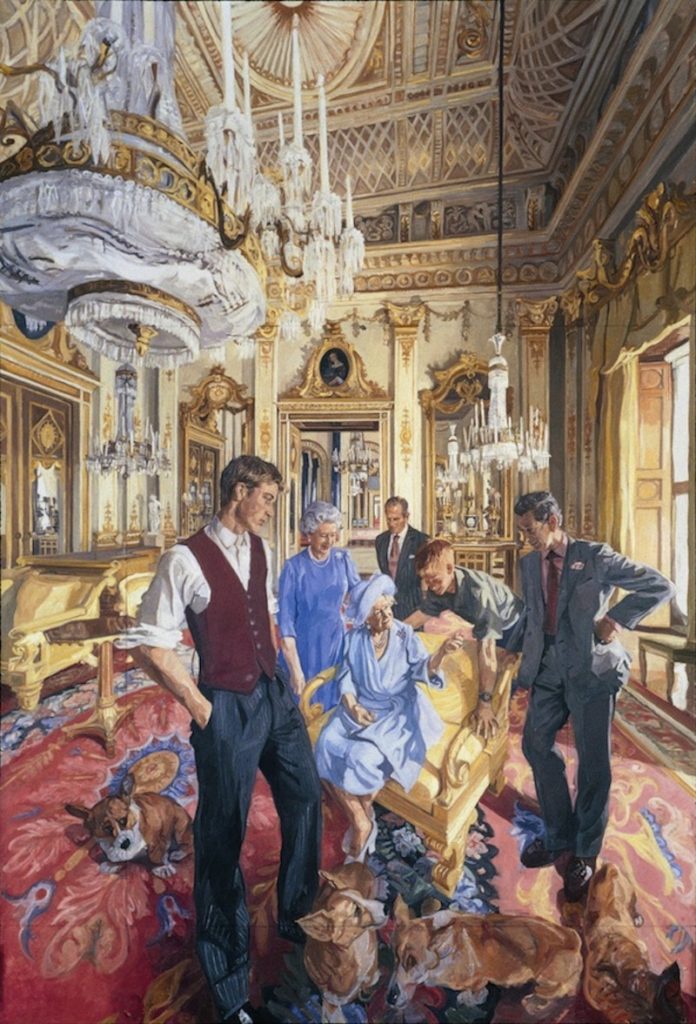










The birthday photograph is reminiscent of the monumental John Wonnacott Royal Family portrait from 2000, painted for the National Portrait Gallery’s celebration of the Queen Mother’s 100th birthday. Twelve feet tall, and full of color and activity, this painting has definitely an unusual composition. It shows a relaxed and informal gathering which is in stark contrast to the Sir John Lavery portrait of George V and his family in the very same room in 1913.
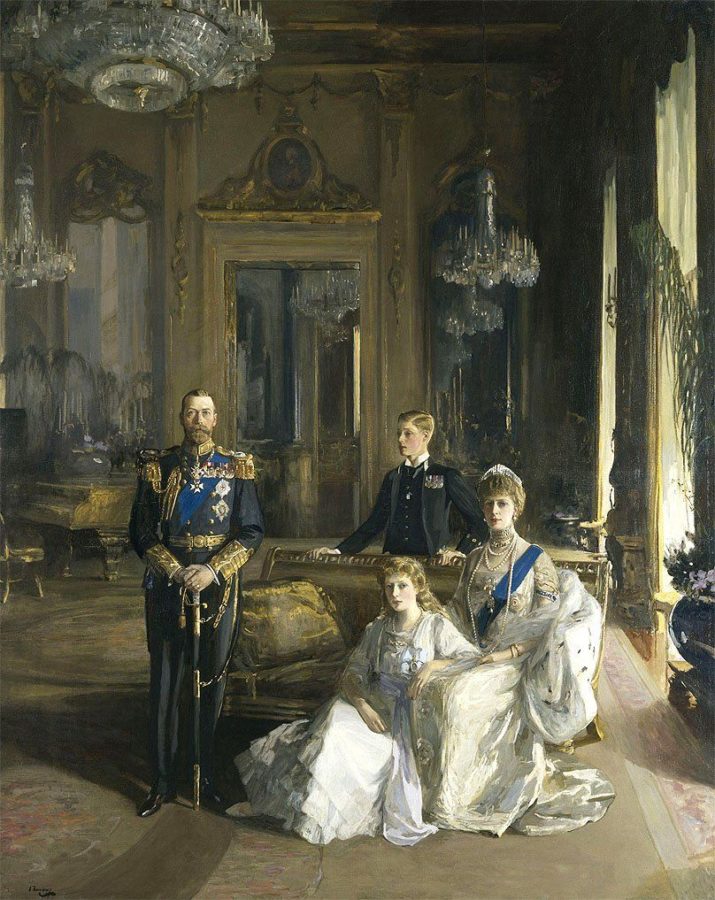











As the former British monarch, Her Majesty Queen Elizabeth II obviously has been the subject of many portraits. Some have become national treasures; others have been heavily and vociferously criticized. Let’s look at some of the best (and the worst) of these.
The Royal Society of Portrait Painters has a growing website archive of images and information on portraits of the Queen.
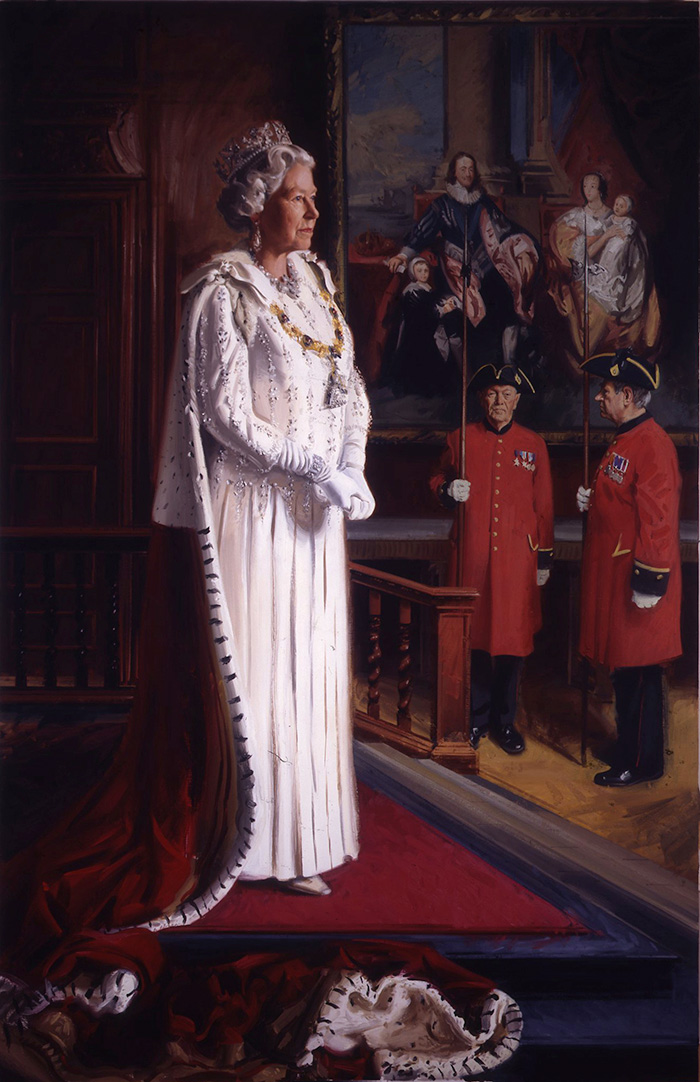
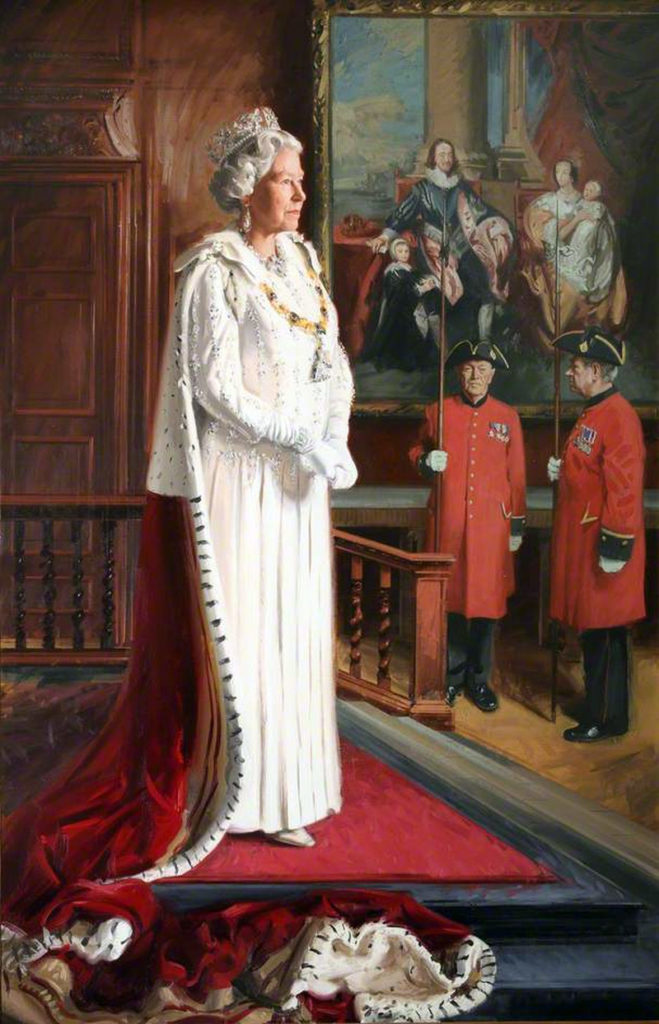










Andrew Festing’s 1999 portrait for the Royal Hospital Chelsea received mixed reviews. Queen Elizabeth is dressed in rich, elegant robes, showing a hint of a smile. Festing said of Queen Elizabeth that “she is enormously helpful and cooperative. She’s very skillful at keeping an alert expression on her face.”
Queen Elizabeth II supposedly preferred the Festing work compared to her earlier 1996 portrait by Anthony Williams. This showed her with care-worn wrinkles and what critics called “fat sausage fingers”. However, this calm, relaxed, painterly image shows a gorgeous use of colors.
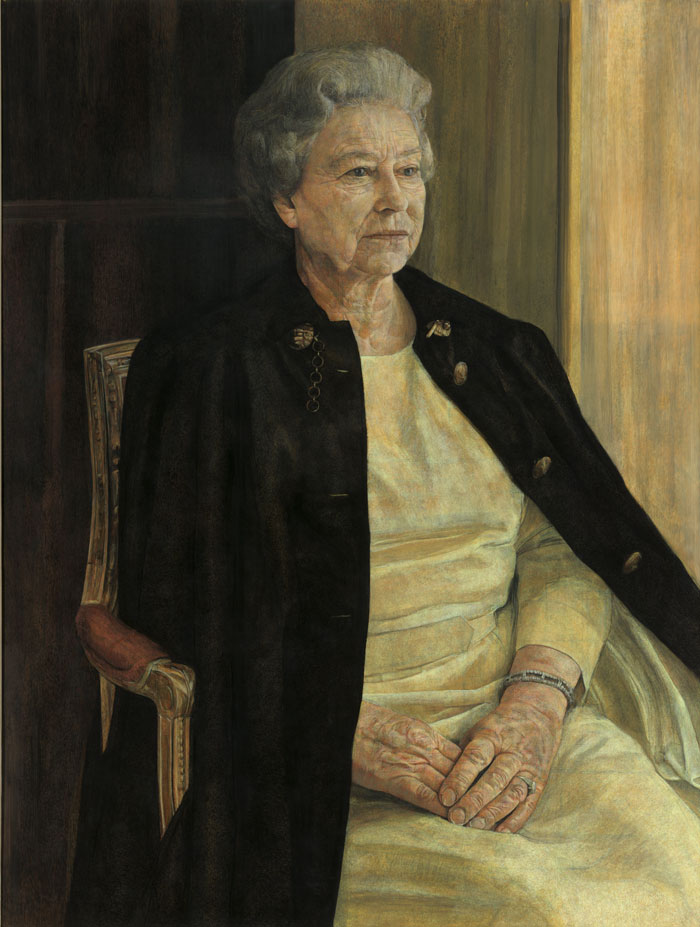











Over 20 years earlier in 1975, David Poole’s portrait also shows the black cloak draped on the shoulders. He said “I wanted to paint her as a woman rather than as The Queen,” and so he asked her whether she could remove her Royal props of cloak, badge and sash. “She was very cooperative and we agreed on a plain white dress in the end,” he said, but the cloak remained.

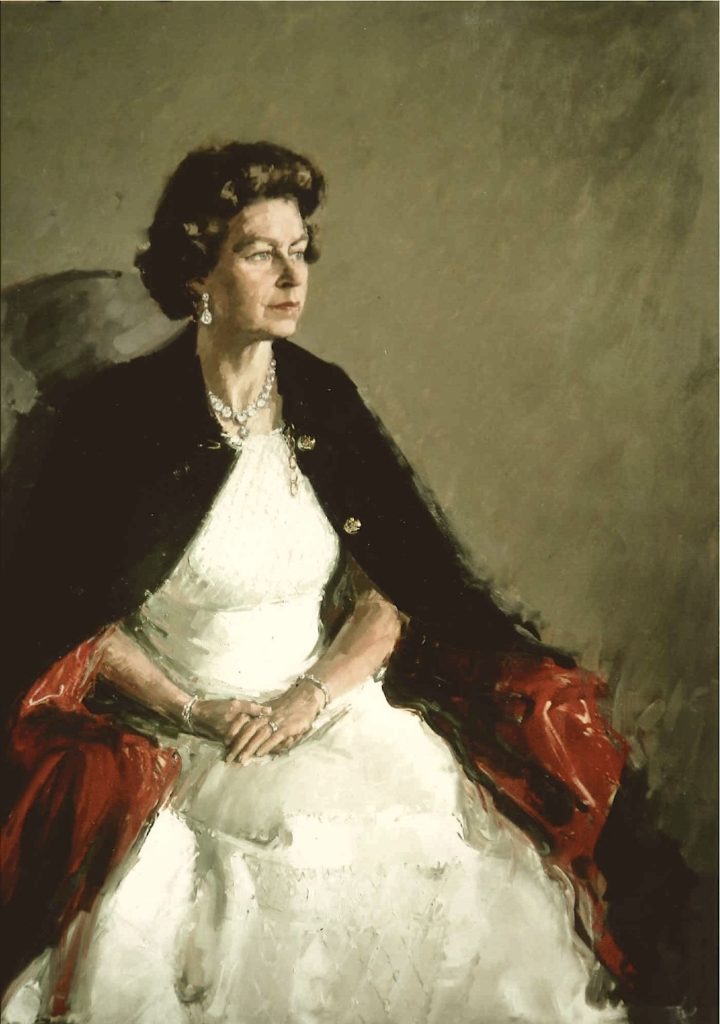










Undeniably no discussion of portraits of Queen Elizabeth would be complete without this controversial Lucian Freud painting. Many critics lambasted this tiny, yet expressive portrait as “a travesty”. Richard Morrison of the Times newspaper noted “the chin has what can only be described as a six-o’clock shadow.” Others, on the contrary, defended the image as “the most honest representation of any monarch for 150 years.”
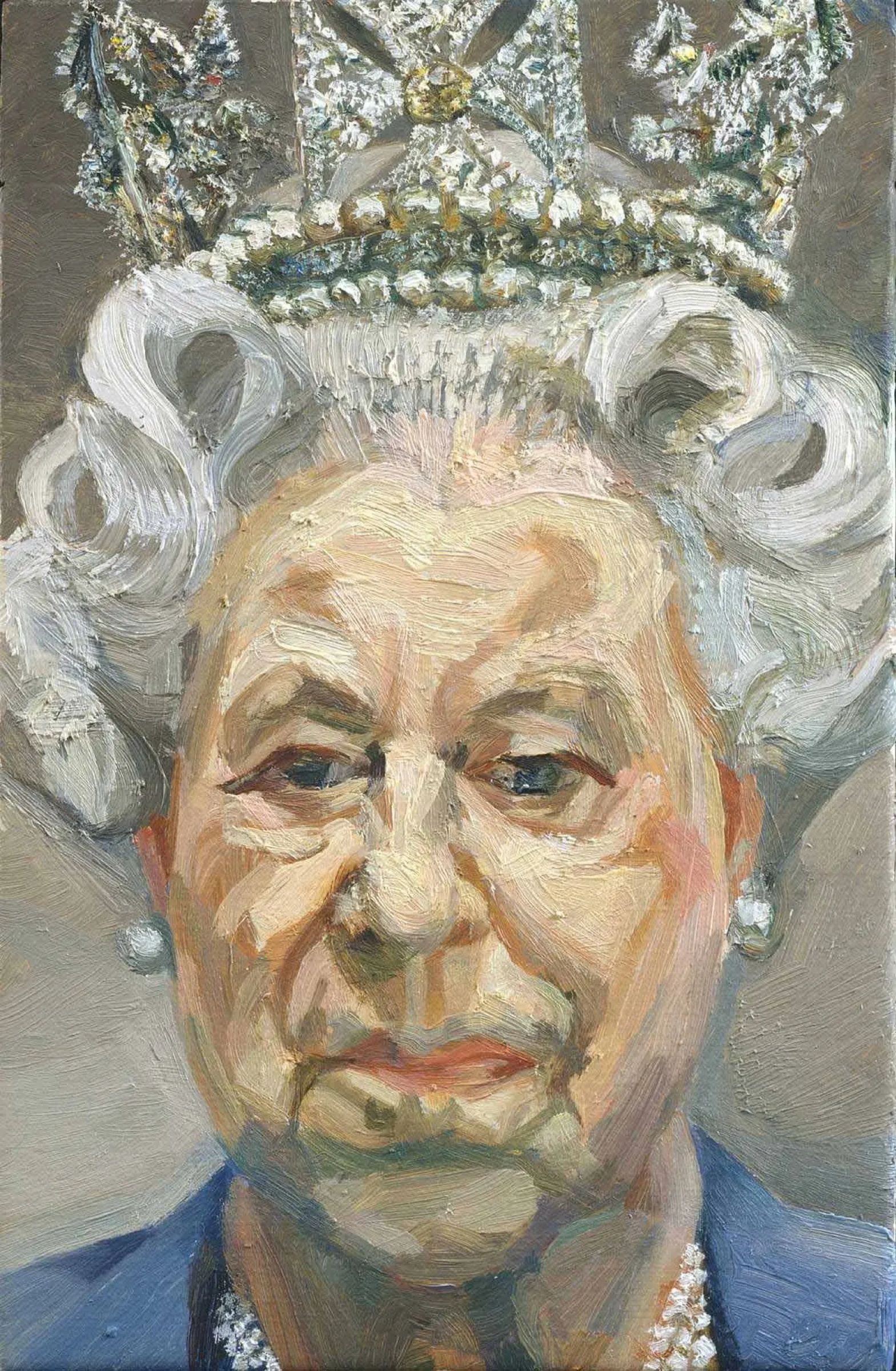
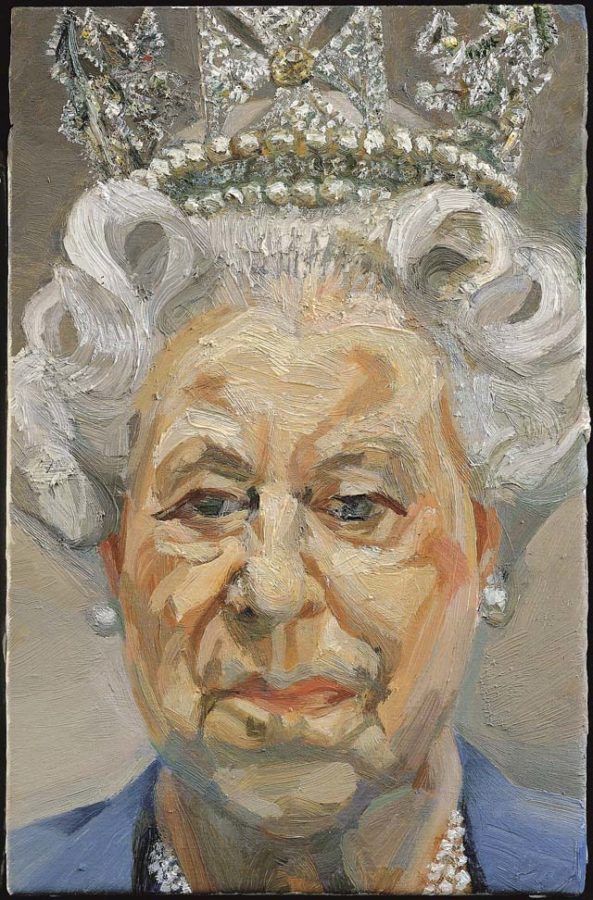










American George Condo’s 2006 portrait was nicknamed “the Cabbage Patch Queen’ and almost universally hated. The surrealist distortions were evidently not to the taste of the conservative British public and press. Brendan Kelly of the Royal Society of Portrait Painters called it “embarrassingly bad.” Condo had originally wanted to paint Queen Elizabeth II naked, and he called the portrait his “Velázquez“, saying it showed: “the majestic, demented decadence of royalty.”

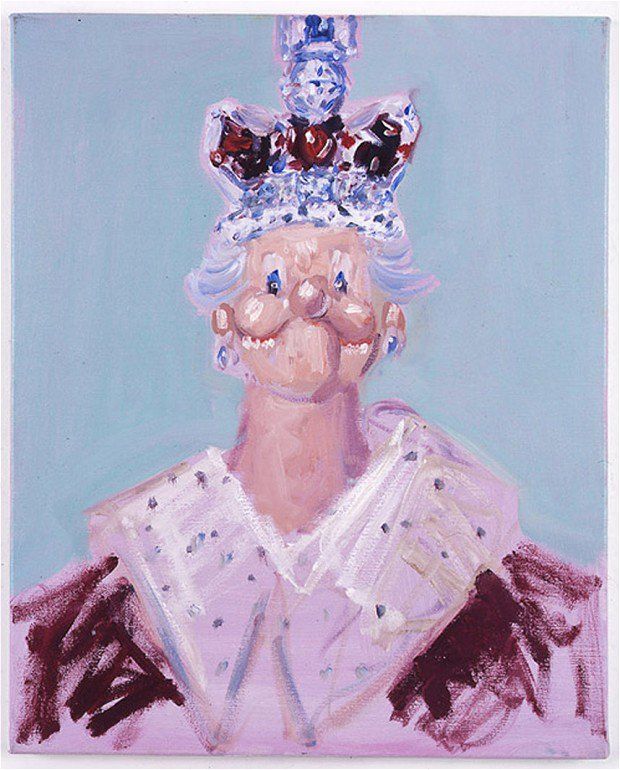










Photography has produced countless images of Elizabeth II but Chris Levine’s highly unusual and striking photograph is thought to be the only image of Queen Elizabeth with her eyes closed.
I wanted the Queen to feel peaceful, so I asked her to rest between shots; this was a moment of stillness that just happened. It has such an aura about it, a power.
Chris Levine in Photographer Chris Levine’s best shot, The Guardian.
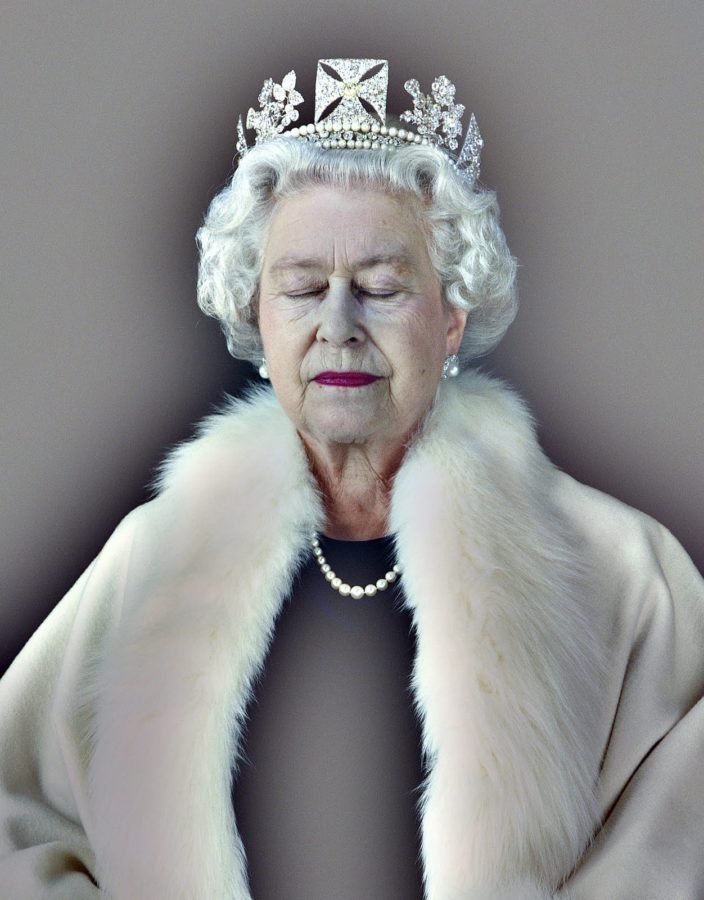











But let us end with a rarely seen portrait. It is by Italian Pietro Annigoni, of Elizabeth II in 1954, painted for The Worshipful Company of Fishmongers in London. In rich and sumptuous fabrics, the young woman towers over her surroundings, assured, self-contained and confident, but with none of the masculine swagger of her ancestor Henry VIII.
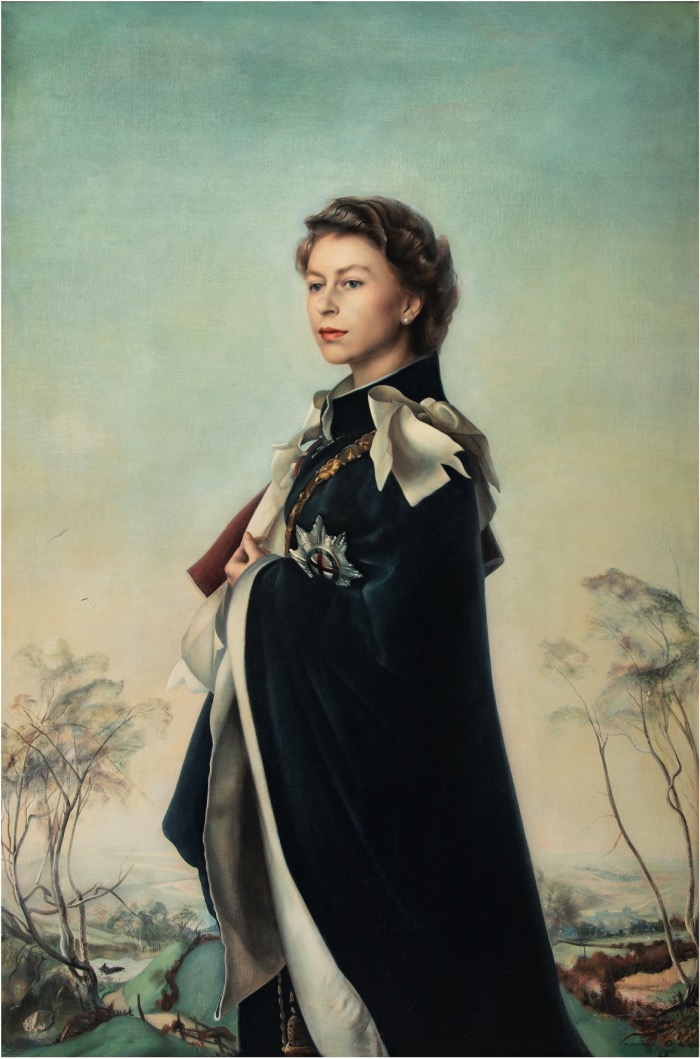
Queen Elizabeth II never publicly comments on any of her portraits, but apparently, after seeing this painting, she then commissioned Annigoni to paint her again in 1969. The 1955 image has been copied to currency and stamps across the world. Annigoni creates a truly ‘regal’ portrait, and as Edward Burne-Jones once said:
The only expression allowable in great portraiture is the expression of character and moral quality, not anything temporary, fleeting, or accidental.
Edward Burne Jones (attr.)
There are literally thousands of royal images out there to find. Which is your favorite?
DailyArt Magazine needs your support. Every contribution, however big or small, is very valuable for our future. Thanks to it, we will be able to sustain and grow the Magazine. Thank you for your help!